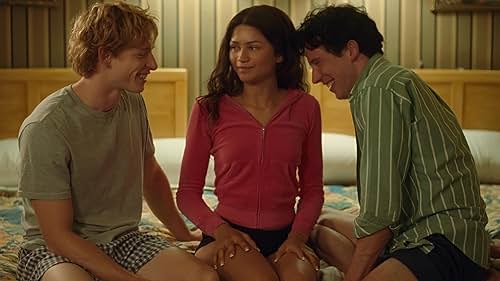
If “Midnight in Paris” is to be considered a love story, the belle of affection must certainly be the city itself.
The Woody Allen film – shown in theaters this past summer and nominated Tuesday for four Academy Awards, including Best Picture – goes far beyond the personal relationship of any two characters. It is a movie about jazz and surrealist art, bustling streets and architecture, rain and sunshine as well as night and day.
It’s a film where characters float effortlessly between the centuries, because time has no impact on their unconditional love of the city of Paris.
“I sometimes think, how is anyone ever going to come up with a book, or a painting, or a symphony, or a sculpture that can compete with a great city?” wonders the protagonist, aspiring novelist Gil Pender (Owen Wilson). “You can’t. Because you look around and every street, every boulevard, is its own special art form and when you think that in the cold, violent, meaningless universe that Paris exists … For all we know, Paris is the hottest spot in the universe.”
Pender is a successful screenwriter but he’s tired of the Hollywood life. And while his fiancée Inez (Rachel McAdams) is ready to buy $20,000 furniture and settle down in a house in Malibu, Pender wants to write a novel or even move to Paris.
But Pender’s greatest dream is an impossible one: to live in Paris during the 1920s and rub elbows with Ernest Hemingway, F. Scott Fitzgerald, Gertrude Stein and Salvador Dali.
One night, at midnight, while Pender is drunk and lost in Paris, an antique car stops and its passengers call for the author to join them. When he does, he somehow becomes transported back to the 1920s where he gets a chance to meet and hang out with all of his idols.
Pender begins to fall for Pablo Picasso’s mistress Adriana (Marion Cotillard). But he is shocked to learn that she too longs to escape her present; she often wishes that she could be transported back to La Belle Époque – Paris in the 1890s.
Wilson is outstanding in his role of Pender, exhibiting almost child-like wonder at the chance to live in a time he has read so much about.
He is also the perfect person to channel Allen’s witty monologues. Who but Wilson could so casually deliver lines like, “‘The past is not dead, actually it’s not even past.’ You know who said that? Faulker. And he was right. And I met him too, I ran into him at a dinner party.”
And at one point late in the movie, while Pender’s mind and words rambles this way and that, it is almost uncanny how similar Wilson seems to Allen, a la “Annie Hall.”
The performance helped earn Wilson a Golden Globe nomination for Best Actor, Comedy or Musical. He was, however, not nominated for an Academy Award.
Throughout his time in the 1920s, Pender meets notable figures almost everywhere he turns, to the point where it nearly seems absurd.
But artists and writers did historically convene at Stein’s Paris salon in that decade, and the movie did its best to play this up, casting notable actors into the celebrity roles. For instance, Kathy Bates (“Misery,” “About Schmidt”) played Stein and Adrien Brody (“The Pianist,” “The Village”) was delightful in his performance as the eccentric Dali.
Other acting standouts were Cotillard as the charming Adriana (“Inception,” “Nine”), Corey Stoll (“Law & Order: LA,” “Salt”) as the straight-faced Ernest Hemingway, and Alison Pill (“Milk,” “Scott Pilgrim vs. the World”) as the animated Zelda Fitzgerald.
Throughout the film, two major cinematic elements stood out. One was the use of a moving camera that followed characters for long periods of time without breaks.
In one scene, Pender, Inez and two of her friends are having a walking conversation at a popular tourist attraction. On a first watch, it’s obvious that there is something subtlety different about the shot, although it’s hard to put a finger on exactly what is unique.
The moviegoer feels drawn into the conversation, as if he or she is walking with the characters. A moving camera that followed the characters around helped create the effect, and it was emphasized by the fact that the shot was almost three minutes straight without a single cut.
Then there’s the music in “Midnight in Paris,” a simple but effective score. The film begins with a three-minute montage of scenes around Paris, set to the jazz song “Si Tu Vois Ma Mère” by American saxophone legend Sidney Bechet. Scenes during the movie were often accompanied by a pleasant up-beat guitar melody. American songwriter Cole Porter’s music also offered the background music for some scenes, and the musician is also a small plot point in the film.
“Midnight in Paris” will vie for wins in four Oscar categories on Feb. 26. Allen is hoping for victories in the Best Director and Best Original Screenplay categories (he won the latter at the Golden Globes). The movie was also nominated for Best Art Direction.
Despite being an exceptional piece of art, the film will need a little midnight Parisian magic to win Best Picture. The movie lost to “The Artist” in the Golden Globe Best Picture, Comedy or Musical category, and now will have to face even more competition against movies such as “Hugo,” and “The Descendants.”
Chris Shores can be reached at [email protected].












